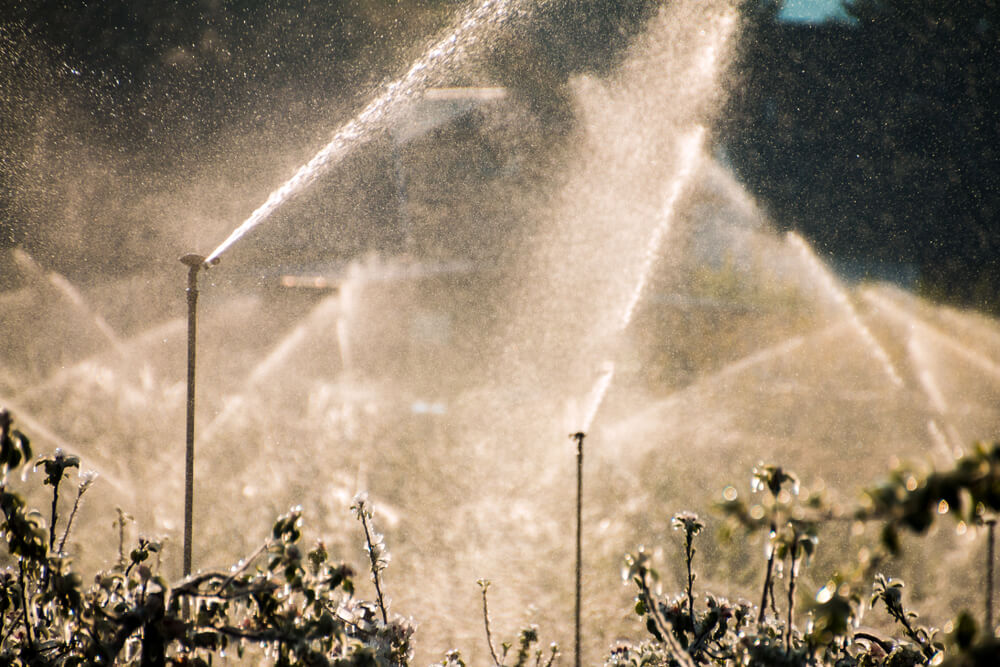As the temperatures start to drop in Canada and winter begins to creep in, it’s time to get your sprinkler system ready for hibernation. Sprinkler system winterization is crucial for protecting your investment and ensuring your system is in tip-top shape come springtime.
If you’re wondering how to do this, don’t worry! You can trust in the experts at Naiad Irrigation Systems. Instead of risking DIY mistakes, let the professionals handle your sprinkler system winterization. We’ve outlined the process below and some FAQs so you can see the steps to this process and why calling in the pros is the best choice for protecting your system!
Step-by-Step: How to Winterize Your Sprinkler System
- Turn Off the Water Supply
First things first, you need to turn off the water supply to your sprinkler system. Locate the main shut-off valve and make sure it’s completely turned off. This prevents water from continuing to flow into the system while you work.
- Winterize the System via Compressed Air
Once the water supply is off, it’s time to remove any remaining water from the system. Using compressed air to blow out the irrigation lines is the most effective way to prevent freezing damage. Here’s how it works:
- Attach the Air Compressor – Connect an air compressor to the mainline, ensuring it’s set to a safe pressure level to avoid damaging pipes.
- Blow Out Each Zone – Run the compressed air through each zone of the irrigation system individually, allowing the air to push out any remaining water in the pipes and sprinkler heads.
- Move Through the System Methodically – Work through each section carefully, watching for mist or water to stop flowing before moving to the next zone.
Using compressed air for winterizing can be tricky without the right tools or experience, so it’s often best to have a professional handle this step. Proper winterization ensures your irrigation system is thoroughly protected from winter damage, saving you from costly repairs in spring. For more information on the winterization process, check out our video.
4. Check the System
Once everything is drained and insulated, take a walk around your yard to double-check that all sprinkler heads are fully retracted and that no water is left in the system.
Trust in Naiad or Your Sprinkler System Winterization
If the blow-out method or draining the system sounds a little daunting, that’s because it can be! Without the proper equipment or experience, trying to winterize your sprinkler system on your own can lead to costly mistakes. Using the wrong air pressure or missing crucial steps can damage your system instead of protecting it. Rather than risking expensive repairs or replacements, it’s best to leave it to the professionals like Naiad.
Our team of experts have the expertise and tools to properly winterize your sprinkler system, ensuring everything is done right and giving you peace of mind throughout the winter months.
Safeguard your system for the winter with our complete and certified blowout service. Book your service with us today or call us today @ 587-205-5768.
Frequently Asked Questions
How does freezing water damage irrigation systems?
Water expands when it freezes, which can crack pipes, damage fittings, and burst sprinkler components, leading to costly repair.
Are there any precautions I need to take before scheduling a winterization service?
Ensure all water is turned off and the system is clear of debris. It is also crucial to schedule one before freezing temperatures set in.
Are there any signs that my irrigation system may have been damaged by freezing water?
Look for visible cracks, leaks in the valve box control valves, pipes or sprinkler heads, and any irregularities in system performance.
Can I winterize my irrigation system myself?
It’s possible, but you will need to have all the right tools and knowledge. Professional winterization services like Naiad’s will ensure it’s done correctly and safely.
How often should I winterize my irrigation system?
It’s recommended that you winterize your irrigation system annually before the first freeze, generally speaking before the Canadian Thanksgiving Day long weekend, and to be safe, before the end of September.
What are the potential risks of not winterizing my irrigation system?
The main risk is significant damage to the irrigation system, including burst pipes and broken valves, which can be expensive to repair.
Book a service or call us today @ 587-200-3994. We provide top-notch services from Irrigation Association-certified professionals.
